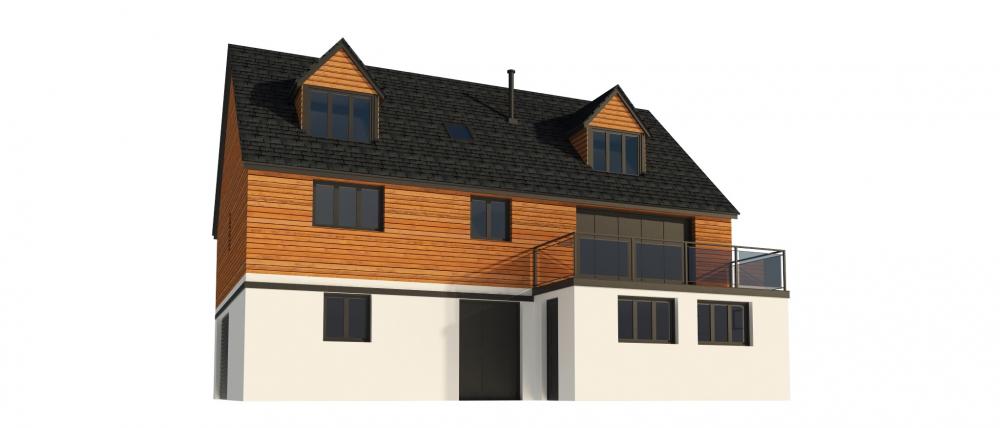Leaderboard
Popular Content
Showing content with the highest reputation on 11/13/17 in all areas
-
Best not to use silicone spray on door seals, it can dry out the foamed rubber used. The right stuff is the wonderful Gummi-Pfledge.1 point
-
Just to clarify that the price of £46/m2 includes 23 metres of external gutter and associated downpipes, clips etc and fascia. 10 metres of a secret gutter with all the associated flashings. We also had to have quite a few bespoke trims to accommodate our upper and lower roof junction with the roof terrace.1 point
-
I was originally going with Colorcoat as the original quotes of £40/m2 Installed was the most cost effective Standing Seam roof I could find. However in the year it took to get from the costing stage to having a roof ready to clad, Tata/Colourcoat seemed to get themselves in a mess and prices went North of £65/m2 installed. I went back a re-quoted all the different options and Aluminium then came in the most cost effective at a little under £55/m2. I wasn't happy with going over budget on the roof, but using a more ductile material (Aluminium, Zinc or copper) does allow hand dressing of all joints, such as roof-light flashings etc. so you avoid having to introduce another material to seal around penetrations.1 point
-
18 months ago we were quoted at £17.56 sq/m for the roofing sheets (but only after a lot of pressure to reduce the price given the additional on costs we had for haulage and a nod to the fact there were no local installers). Another £1800 for the ancillary bits and bobs, plus another £650 delivery costs from their depot to Aberdeen (they will not let you collect). We would have had a few hundred extra to get the roofing from Aberdeen to Orkney on top of that. Labour was estimated at £2703 Roof size circa 150 m2 Tata roofing costs £35.54 sq/m Labour estimate £18 sq/m Total £53.54 sq/m1 point
-
+1 on silicone grease, NOT silicone spray. Been using it for years on F and co-ax connectors and crimp connectors of all sorts. I dip the stripped wire into the grease then put the crimp on. I dip crimp spades into it too before putting together. Just using it now where the rear wash wipe spindle passes through the rear screen in the Golf. Battery terminals on the cars... The lads at work use it on the actuator spindles in fan coil units too. I use silicone spray on some plumbing stuff and the door seals on the car1 point
-
The cost of our roof has worked out at approx £46/m2. There is no labour charge as we are doing it ourselves1 point
-
Don't use either WD-40 or 3-in-1, as both have the potential to damage seals from the solvents they contain and neither is a particularly good lubricant. WD-40 is most definitely not a lubricant, the name is an abbreviation of "Water Dispersant Type 40", and "3-in-1" is a mixture of light machine oil and solvents, intended to work as a short duration lubricant, a cleaning agent and an anti-seize agent. High temperature silicone grease is generally pretty safe on anything, and is most probably what is used as the assembly lubricant originally. I keep an aerosol can of "O ring safe" motorcycle chain lubricant around for jobs like this. You can be sure that the solvent that allows it to penetrate won't damage seals, and the resulting heavy grease is non-corrosive and resists pretty high working temperatures OK.1 point
-
We're discouraged by Zink due to the ~£120/m2 (material + labour) cost that we're being told by both our architect and quantity surveyor. We've reached out for actual quotes but are seeking alternatives until they come back, hence the query. Would you mind sharing your supplier with me via PM @Alexphd1?1 point
-
I think the depths are a minimum. I have never known a DNO refuse a connection because the trench is too deep. They WILL refuse a connection (as I have seen) if the "duct" you leave for them is a bit of blue water pipe.1 point
-
1 point
-
That's what I always hated with window fitters. You buy a well made insulated window and then installers seem to think it's OK to leave gaps all the way around and cover it with plastic trim - so it all looks nice1 point
-
Funny you say that ..... now considering tiling the whole of the floor before the half height stud wall goes in as it will mean that in the event the kitchen does get changed, the floor will be in tact and not need re-laying ... Sounds like a change of plan to me ..!1 point
-
1 point
-
Right .... job done ..! Wickes had their latex SLC on offer so it’s worked out about £13 a bag. I learned two things today .... the first is that a bag of SLC and 4 litres of water will fit in a standard Wickes bucket .... The second was that Wickes make their buckets out of recycled milk carton lids and they can’t cope with the weight ...!! Lost about 10% of the first bucket to the utility floor, the rest got mixed in a couple of batches and seemed to be fine when it was mixed into the rest on the floor.....1 point
-
It's very moving to read posts like these. When the phrase thats not today's problem as in is used , it puts my own insecurity and stress sharply into perspective. And maybe other peoples too. My experience tells me that it takes a high level of persistent stress and anguish to get to the point where just getting through that day is counted a success. Thanks for posting @lizzie and @Moira Niedzwiecka, I am sure you can count on our continuing support. Have an appropriately modest man-hug. (each) Ian1 point
-
You can definitely DIY it. I just have, see my latest blog entry: I did all the calculations my self, I have a floor area of 438m2 which was my defining limit giving a unit requirement of 472.92 m3/h, so beyond one standard unit, I ended up with 2 x Brink Renovent Excellent 400 plus units. From the blog you can see it can be installed however I did have the help of my builder (with all the tools) but you definitely need 2 people when running pipes. I spent a long time working out duct runs which paid dividends during the fitting even though we varied, as I knew the plan back to front alterations on the fly were easy. All my equipment came from CVC, they also supply Ubbink ducting, though it is not on the website, just e-mail them and they will send you a price list for all the components. For power I went with aiming between the 50-70% mark, with my theory being the slower the fan runs the less noise and if you look at the performance tables they are more efficient (heat exchange) at lower settings, so personally I would go towards the 400m3/h. As for pressure difference that depends on your duct design, the longer more complex the duct/manifold/terminal arrangement the higher the pressure! Reading into @JSHarris blog and subsequent conversation he states that he probably wouldn't fit a Genvex in hindsight (wait to be corrected) as it is not really needed in his situation. and @PeterStarck units also does DHW so not just an MVHR unit. For your calcs personnel calcs is based on 2 personnel for the first room and one thereafter, not what you can cram in, it is all building regs based, you need to work out if your extract requirements exceed your floor area supply requirement and base your system on the greater of these.1 point
-
1 point
-
I hired a nice Vietnamese man via Upwork.com, sent him a copy of my plans with a description of what the general look would be and he created me a 3D model in sketchup, complete with 4 full rendered drawings. Best $50usd I've ever spent... also had quotes from designers in western countries for over $500 for exactly the same job! there are people on that site with skills in many software packages if you prefer something other than sketchup.1 point
This leaderboard is set to London/GMT+01:00









